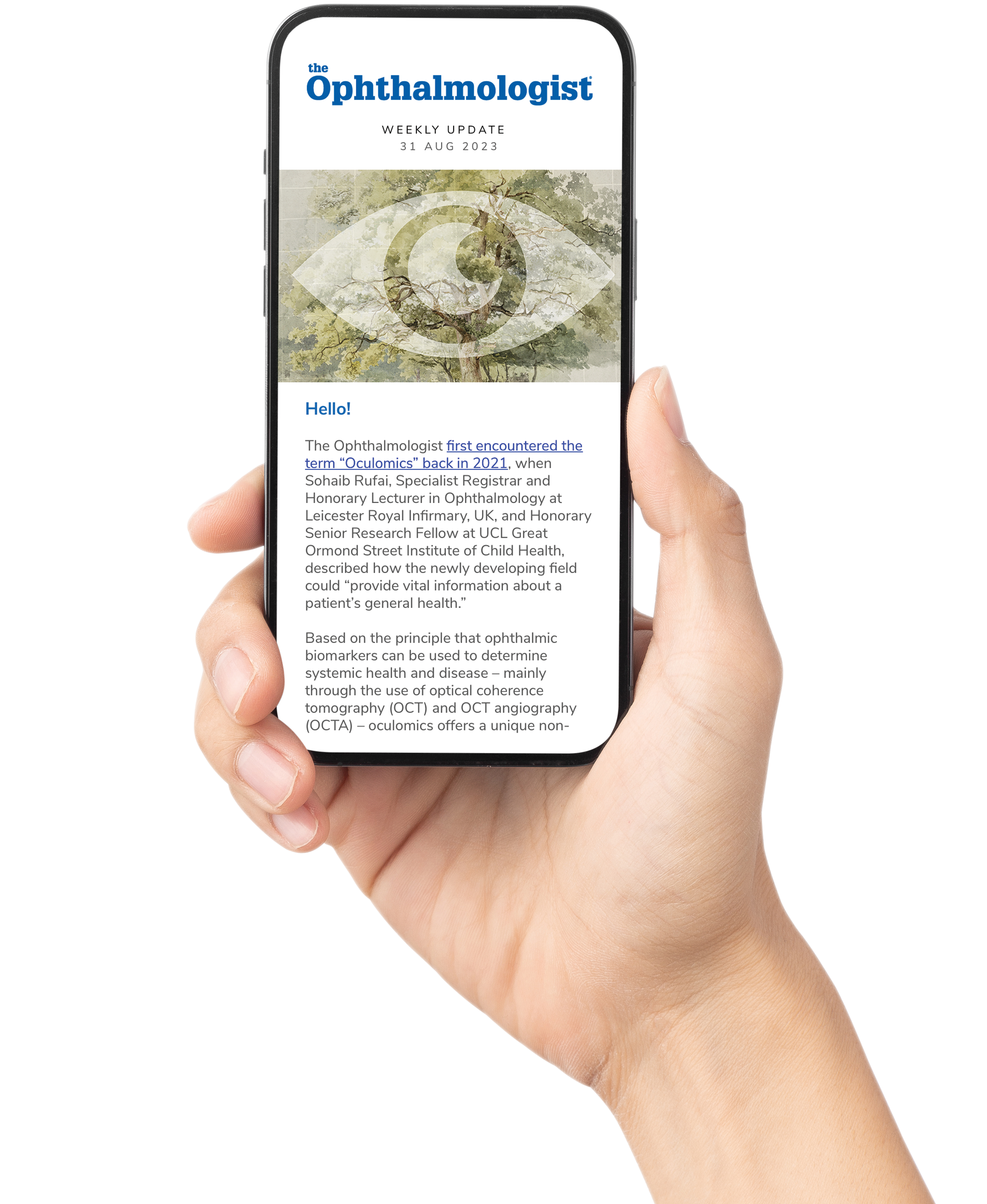
Foundation models are gaining traction in ophthalmic artificial intelligence (AI), offering transferable features for diverse imaging tasks. However, the barrier to entry still remains high, with earlier models such as RETFound-MEH (Moorfields Eye Hospital) and DERETFound (proposed as a more "data-efficent" alternative to RETFound by Yan et al. in 2024) demanding either vast datasets or immense computational resources.
Building on these two earlier models, two researchers from the University of Edinburgh, UK, Miguel O. Bernabeu and Justin Engelmann, developed RETFound-Green, a retinal foundation model that achieves comparable or superior performance as its predecessors while requiring half the data and 400× less computing resources.
“RETFound-Green is a super efficient model; you can even run it on a standard smartphone,” explains Engelmann, study co-author and now a postdoctoral researcher at the UCL Institute of Ophthalmology, London. “There are two advantages of RETFound-Green: First, it was made with very little resources. The original RETFound was trained with a million images in a big cloud data centre, which cost many thousands of dollars. RETFound-Green, on the other hand, used 75,000 openly available images and was trained on a desktop PC “gaming” graphics card in just a few hours. Second, it is very efficient to use: the model is 14x smaller so users can download it quickly. It also runs ~2.6x faster, so you do not need to have high-end hardware to use it. Surprisingly, it performs just as good as the original RETFound, and in our experiments – on dozens of tasks from datasets across the world - even has a slight edge in terms of accuracy.”
A shift towards efficiency
The "original RETFound," RETFound-MEH, was originally trained on nearly 900,000 retinal fundus images – many non-public – using eight datacentre GPUs for two weeks, at an estimated cost exceeding $10,000. And while DERETFound reduced the data requirement to 150,000 images (all public) by employing synthetic augmentation, its training was even more computationally intensive, costing an estimated $14,000 in total. By contrast, RETFound-Green’s financial cost was estimated by the team at less than $100 in total, with its environmental footprint equated to burning 0.2 kg of coal, compared with 81kg for RETFound-MEH and 117 kg for DERETFound.
When evaluated on six datasets spanning Asia, South America, and Europe – including diabetic retinopathy (DR), retinopathy of prematurity (ROP), and multi-class retinal diseases – RETFound-Green consistently outperformed its predecessors.
Statistical wins: 36 for RETFound-Green vs 11 for DERETFound and 7 for RETFound-MEH.
Diabetic retinopathy: Despite RETFound-MEH’s richer pre-training on DR images, RETFound-Green showed the strongest performance in grading and screening tasks.
External generalizability: In cross-dataset experiments, RETFound-Green achieved 41 significant wins, more than double DERETFound’s 17.
Of particular note, RETFound-Green demonstrated robust performance on ROP images, despite never being exposed to such data during training. This suggests strong adaptability to distribution shifts, a frequent challenge in clinical AI deployment.
Practical advantages
Beyond accuracy, RETFound-Green offers meaningful workflow benefits. Its faster vector embedding times means that it requires 2.6 times less storage space, and its increased inference efficiency means that it can enable real-time analysis even on modest hardware. The system also demonstrates ease of use, being compatible with modern Python programming language versions, and avoiding the outdated dependencies of earlier models. Crucially, RETFound-Green’s performance with linear probing – simple logistic regression on feature vectors – was found to be comparable to a fully fine-tuned version of RETFound-MEH. This would enable low-resource centres to adapt RETFound-Green for local needs without expensive GPUs or any advanced expertise required.
"I hope that RETFound-Green helps to dispel some myths around how resource-intensive it is to develop AI models," says Engelmann. "I have brilliant colleagues in LMICs [Low- and Middle-Income Countries] who do not have access to GPU clusters and might not even have reliable electricity. Most AI development is currently done in high-resource settings, but in my opinion most of the benefits of medical AI will be realized in low-resource settings where clinicians are in short supply."
Implications for ophthalmology
For ophthalmologists, RETFound-Green underscores how AI can be democratized. By drastically reducing barriers to training and deployment, the model opens avenues for retinal AI in under-resourced settings where diabetic retinopathy and other retinal diseases are most prevalent. Moreover, its efficiency suggests potential for federated learning and privacy-preserving applications – critical for multi-centre collaborations and regulatory compliance.
RETFound-Green demonstrates that state-of-the-art performance in retinal image analysis no longer requires prohibitive resources. Its success validates domain-specific self-supervised strategies and signals a turning point: efficient, accessible AI for ophthalmology that can scale globally while minimizing cost and environmental impact.
"My research would not have been possible without openly available datasets – this is often overlooked, but is a key driver of progress in ophthalmic AI," Engelmann notes. "However, most datasets are from developed countries, and so we need better representation of the rest of the world. Colleagues of mine from across the world are currently building a truly global foundation model. Any readers that might be able to contribute to this effort should take a look."
